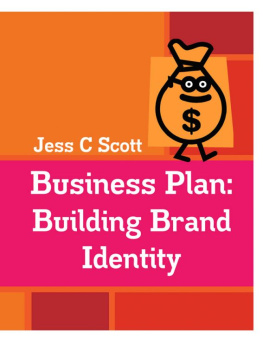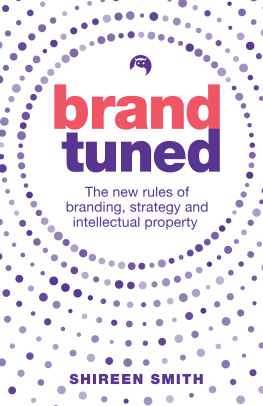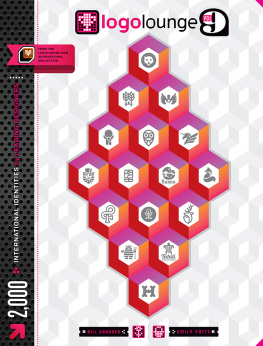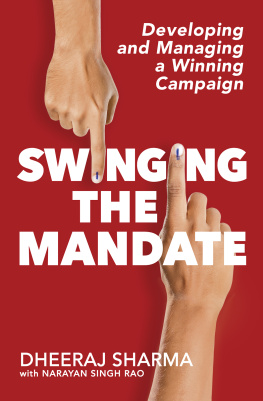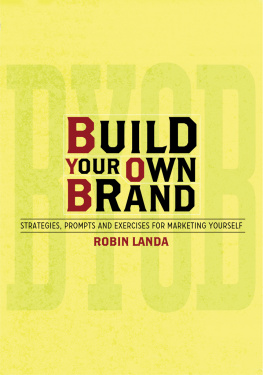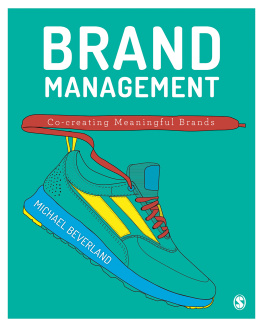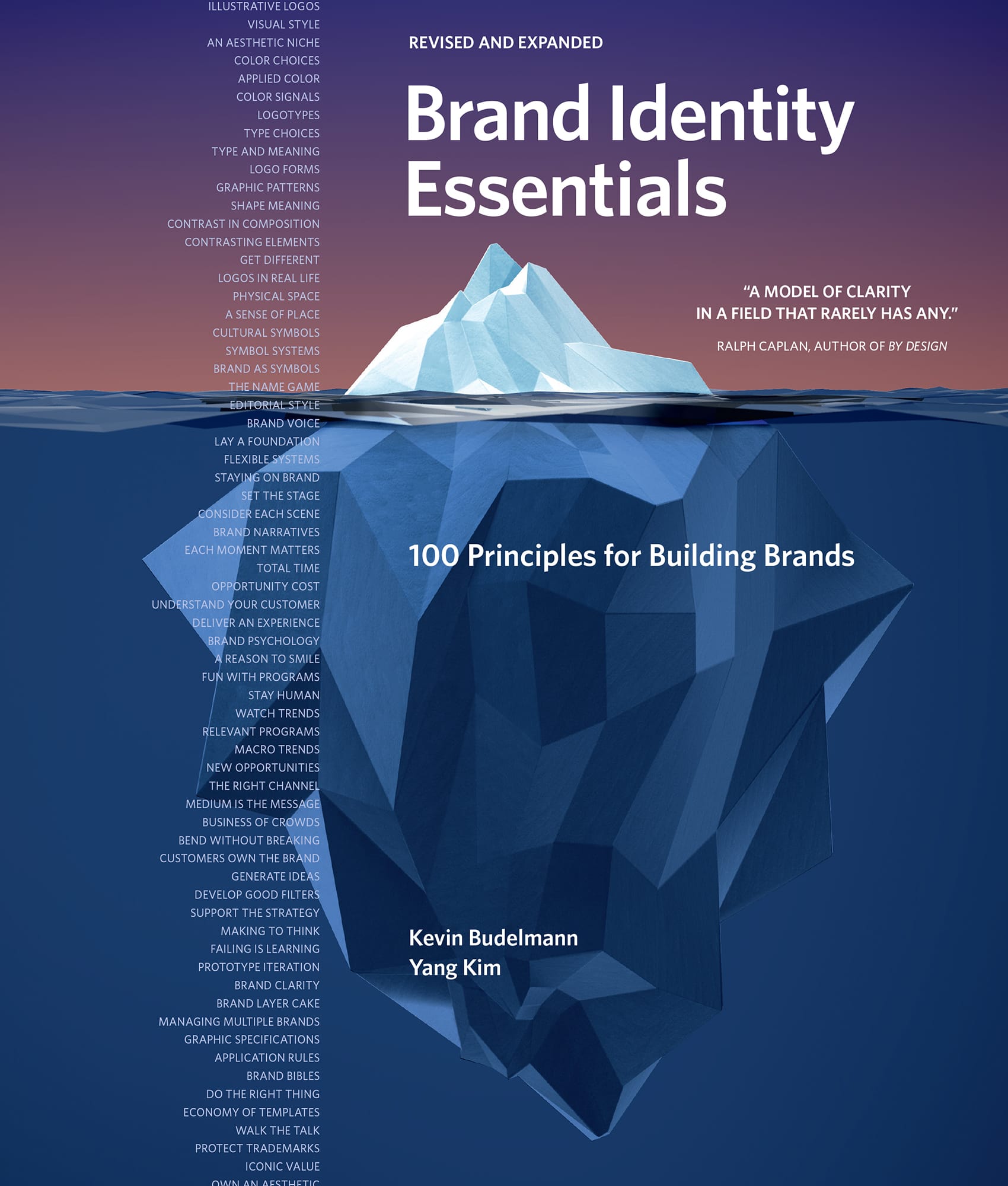As people make choices in their personal and public lives, they seek meaningful experiences. A brand is a way for them to encapsulate and describe these things, often in a commercial context. A cynic may view branding as deception, but power in the right hands can yield positive results with a cultural impactfrom the biggest ideas to the smallest details.
Despite everything thats been written about brands, many are forgettable. In this second edition of Brand Identity Essentials, we present even more ideas for building strong brands. You may know a great brand when you see it, but brand builders often lack the vocabulary and tools to improve. Making a brand great is easier said than done.
This book is a guide for people who build brands: leaders, managers, and makers. The pages that follow explore the elements of brand identity, a much-referenced but often elusive topic for people who make day-to-day decisions about tactics, tools, and teams. This book addresses what can seem like fuzzy and subjective topics, connecting business to creativity and strategy to execution. It is also for learners and educators, serving as a course curriculum to teach and learn about brand building. Educators and course designers may find this book helpful in developing assignments for the classroom. Students may find the content helpful in making connections and filling gaps.
We hope that all manner of learners and professionals find this book helpful as their work adds to the cultural narrative of brand building.
Brands and Beliefs
It seems like everyone has an opinion about brands. We all believe we know what branding is, yet there are many different definitions and interpretations. Businesses consider brand development as part of a marketing plan, a way to package products and services. The news media understands branding as a tool of persuasion, public relations, or a way to reframe an argument. Is it an estate tax or death tax? And yet no one wants to be branded. After all, the word originated with ranchers forcibly tattooing livestock to keep track of them. We dont want to see ourselves as part of the herd; we like to see ourselves making individual choices.
People love brandsand love to hate brands. That can be okay; brands are like magnets. The strength of a brand can be measured by its magnetic attraction to the people it serves. So, its better for a brand to be hated than forgotten. In fact, given all of the decisions that go into building a strong brand, its nearly impossible to generate brand love without also generating some hate. Savvy brand builders know what makes people feel passionate and why brands attract some people and push others away.
Brands are about choices and the people who make them. Brands are like tribes or clubs, a way of defining and demonstrating our values and beliefs. We align ourselves with brands that express our point of view. In doing so, we align ourselves with others who feel the same way. Were social animals and long to be part of a group. As default, historical groups like religious affiliations mean less to people, and many seek to build new tribes that reflect their aspirations and beliefs. People opt insometimes, all inwith stickers on their laptops or cars, logos on their clothing, and tattoos on their bodies. A logo can be a cultural symbol. The identity of a brand reflects the personal identity of its participants.
Brands are about gaining trust through experience. Earning trust is a long, slow process. Trust is easy to lose and hard to gain back. Do we trust our politicians? Big business? Social media platforms? How did we lose trust? What would have to happen for us to trust again? The identity of a brand, as with a person, begins and ends with experience. Keeping our promises creates a positive perception.
Building Brands
When building a brand, think of an iceberg in which only the tip is visible. Most of what makes up a complete iceberg exists below the waterline. The same is true for brands. The parts we see are the most celebrated and understoodand if you dont watch where youre going, the most dangerous. Thats why so often brands are equated with logos. Even though its the most identifiable expression of the brand, a logo is not a brand. A logo is a symbol of a brand.
Brand building can be broken into two primary endeavors: brand meaning and brand experience. Brand meaning is a key question involving positioningmaking strategic choices about audiences and promises. Brand identity is about perception, what people think, and what you might want them to think. Brand perception is the net result of customer experiences. The difficult truth is that your brand perception can be defined by your weakest link. Branding means being intentional and making choices that build your desired identity.
People make decisions every day on behalf of the organizations they represent. These seemingly small decisions result in ways customers interact and think about a brand. Too often, these decisions dont add up to a cohesive whole. Moreover, the mosaic of customer interactions can result in a brand experience that does not reflect your intended brand meaning. We dont always do what we say.
The work of brand building involves making strategic and tactical choices that affect customer perception and experience. Some decisions are easy to see, like the tip of an iceberg, but many are hiding and can have an even greater impact. The aim is to think about the problem of brand building holistically, noting how all the parts and pieces work together to achieve a cumulative effect.
Brand building is a journey, not a one-time event. It takes patience and practice. It requires decision making, discipline, trial and error, measuring, learning, and course correction. Working systemically doesnt not guarantee success, but it can increase your odds of building a strong brand.
Brand Identity Framework
Real life is messy. It can be hard to know where to begin to address the complexity of a customer experience, but a recipe can help. Weve built a model for thinking about brand building that can help you make decisions and create systems. The Brand Identity Framework is a reference to help guide the everyday decisions brand builders make on their journey.
The Brand Identity Framework features two dimensions of brand building and management: brand levers and brand actions. Brand levers are themes that can be a reference point for brand builders and project teams. They offer a vocabulary and dials that can be tuned to create the desired effect. Brand actions represent how much and what kind of pressure you mean to apply to each lever. Together, they provide a way to think about and collaborate on brand decision making. The majority of this book is dedicated to exploring each brand lever by each level of brand action, breaking the problem into 100 digestible parts, with examples of work to illustrate the point and inspire brand teams.


